Amazon Conversion Rate Explained: Benchmarks, Amazon Conversion Rate Formula & Optimization Tactics to Improve Conversion

Your Amazon conversion rate tells you if all those clicks on your listing are actually turning into sales. That’s a metric worth paying attention to because you’ve put the effort into getting the traffic, optimizing your listings, and showing up in SERPs.
If shoppers keep bouncing instead of buying, there’s a clear indication that something’s off, and without knowing why, you’re stuck watching potential revenue walk out the door.
This guide will walk you through what a strong Amazon conversion rate looks like, how to calculate it, what those numbers really mean (especially Amazon conversion rate by category and how PPC ad campaigns help), and most importantly, how to actually improve it.
Because traffic means nothing if it doesn’t lead to sales. So, keep reading to know how to improve the conversion rate on Amazon.
What is Amazon conversion rate?
Amazon conversion rate tells you how often people buy after viewing your product. The higher the rate, the better your product is at getting people to hit “Buy Now”.
It not only indicates how appealing your listing is to them but also how it directly impacts where you land on Amazon’s search results.
While attention spans are limited and product options are endless, this metric becomes a weighing scale of your marketing efficiency, be it via PPC ads or organic marketing.
The conversion rate shows how much your target audience likes what you offer, thus signaling Amazon’s A9 and A10 algorithms that you must be seen by more buyers.
So, it considers you more relevant to the search queries, ultimately placing you higher in the Amazon SERPs, anticipating quick conversion.
- Most ecommerce sites convert at a modest 1–2%.
- Top 500 online retailers convert at around 3.3%.
- Amazon listings are staggering 10–15%, which means on average, 10 to 15 out of every 100 people who visit a product listing on Amazon end up making a purchase.
- And if you’re selling to Prime members, the conversion can soar beyond 74%, according to Millward Brown Digital.
So, why does Amazon perform so well?
Most shoppers come to Amazon with high buying intent. Even when browsing, they’re typically deciding between what to choose. By signing up for the Amazon FBA program, you’ll have a Prime badge slapped on your product listings, which can positively influence a buyer who’s on the fence.
But before you start popping the champagne over a high conversion rate, keep this in mind: percentages don’t always tell the full story. One sale from one visitor? That gives you a 100% conversion rate, so, always look at volume alongside percentages.
Look at the number of conversions and the amount of traffic together to get the full picture. This we will explain in our following segments.
Why does the Amazon conversion rate matter?
Amazon conversion rate reflects the true health of your product listing.
- It helps you assess A/B test performance (using Campaign split test or listing performance split test).
- It’s your ticket to better organic rankings.
- And most importantly, it shows you when to take charge and improve your selling strategy.
How to calculate Amazon Conversion Rate?
If 100 people click on your product organically and end up on your product page, and 10 out of those 100 people complete a purchase, that’s a 10% Amazon conversion rate for the product.
To calculate it, you just divide the number of orders by the number of visits to your listing and multiply by 100.
Here’s the formula simplified:
Conversion Rate= (Orders ÷ Sessions) × 100
Similarly, your Amazon PPC conversion rate follows the same formula: (Number of orders from ads ÷ number of ad clicks) × 100.
How Can You Monitor Your Amazon Conversion Rates?
Once you have the Amazon conversion rate formula, monitoring it becomes easy. Simply go to Seller Central and click on ‘Menu’ followed by ‘Reports’, you’ll get Detail Page Sales and Traffic, and you’ll see “sessions” and “order item” columns.

Use the numbers to plug into the formula and track your performance. Easy peasy!
Evidently, high conversion rates usually mean your listing is successfully optimized, and your images, title, reviews, and price are convincing enough for shoppers to buy.
Interpreting Amazon Conversion Rates
Amazon conversion rate is an incredibly useful indicator, but when taken at face value, without looking at the full context, it can be incredibly misleading.
If all your traffic is coming from a branded search like “GlowRx Vitamin C Serum,” of course, people are converting. Now, contrast that with broader searches like “best face serum”, lower conversion, but way more opportunity for discovery. That’s why looking at Amazon conversion rate in isolation can be misleading.
The number’s only meaningful when you understand the story behind it.
Let’s break down what really drives this metric and how you should interpret it to make better business decisions.
1. Longer time frames give you more reliable data
A 12% conversion rate over 50 sessions tells you very little. You will keep on wondering what is a good conversion rate on Amazon for your product if you don’t have a timeframe long enough to hit the accuracy.
It’s easy to get excited or discouraged when you see a sudden spike or drop. Maybe your listing just hit 10% and you’re ready to celebrate. But before you react, ask yourself this:
How many people actually visited your listing? Let’s say 1 person out of 10 buys. That’s a 10% conversion rate. But what if the next 10 visitors don’t convert? Now your rate is cut in half. Did something go wrong? Probably not. It’s just too soon to tell.
When you zoom out and look at hundreds or better, thousands of sessions, that’s when the real story starts to take shape. The ups and downs start to smooth out, and you begin to see what’s consistently working (or not working) in your listing.
So, when dabbling with Amazon conversion rate, don’t focus on daily fluctuations. Check your Amazon conversion rate over weekly or monthly intervals. Incorporate strategy changes based on patterns noticed over a longer period.
2. Competition impacts everything
Even if your product is excellent, competition has a direct impact on your Amazon conversion rate. When shoppers have more options, they’re more likely to fiddle around comparing, second-guessing, or they may ultimately leave without buying.
The presence of strong competitors doesn’t mean your product is failing and you’re going to be cursed with a poor conversion rate. It just means your listing has to work harder. Use this opportunity to come up with better images, stronger copy, enhanced brand content, and social proof (like reviews and ratings) can all help tip the scale in your favor.
3. Profit > percentage (of conversion rate)
If you’re discounting mindlessly to get sales or overspending on ads just to maintain that Amazon conversion rate, your profitability will greatly suffer, affecting overall ROI.
Conversion rate is only reliable if it contributes to sustainable growth. A 9% conversion rate with solid margins is far better than a 15% rate that drains your budget.
4. Some categories just convert better than others
Not all products are created equal, and neither are their Amazon conversion rate by category. That’s why it’s crucial to look at your numbers in context of your category.
So if you ask, ‘Is a 7% conversion rate good?’, it will completely depend on what category the product belongs to, CPC, and market size, so you can’t really judge a certain percentage across several categories. A 7% conversion rate might be underwhelming in one niche but phenomenal in another.
While the average Amazon conversion rate of a collagen boosting night cream (from Personal Care category) may stand at 13–18%, the same for a collagen supplement powder (from Health & supplement) category may be at 5%.
Some categories naturally attract high-intent shoppers, where people who know exactly what they want and are ready to hit “Buy Now.” Others invite more browsing, research, and comparison before the sale ever happens. So, if you understand the context behind your numbers, you’ll make smarter Amazon conversion rate optimization choices.
When someone types in “organic turmeric capsules,” they know exactly what they’re looking for. Maybe they’re dealing with joint inflammation or are concerned with boosting immunity, but either way, they’re on a mission. They probably already have a product type or brand in mind, and they’re ready to hit “Add to Cart.”
That kind of search is what we call high-intent search. Health & Personal Care products often show strong conversion rates because shoppers in this category are looking to solve a real problem, fast.
Now compare that to someone browsing “boho curtains for bedroom.”
They’re most likely exploring styles, checking sizes, scrolling through reviews, maybe even saving a few options to come back to later, all of it without any urgency in purchasing. That’s called a low-intent browsing session, and categories like Home & Decor or Fashion tend to see lower, more fluctuating conversion rates as a result.
So when you’re analyzing your Amazon conversion rate, always ask:
Am I selling a necessity or a nice-to-have? A grab-and-go item or a decision-heavy purchase?
That answer alone will help you set more realistic expectations and make smarter, more strategic optimization choices.
So, benchmark yourself against your own category and even better, against your own product’s past performance. This brings us to understanding what a good Amazon conversion rate is.
What Is A Good Conversion Rate For Amazon?
Broadly speaking, a 13–15% conversion rate is considered excellent for Amazon listings in general. At that level, your product page is likely firing on all cylinders, your pricing is competitive, reviews are working in your favor, your content is clear, and your branding resonates. It means you’re attracting the right traffic.
Note: If your click-through rate (CTR) is high but conversions are low, that’s a red flag.
We’ve already talked about how the Amazon conversion rate by category can swing dramatically. So when someone asks, “What is a good conversion rate on Amazon?”, the only honest answer is one that performs above the average for your category and one that leads to profitable growth.
A 12% conversion rate in Home & Kitchen might be strong, while the same figure in Grocery or Health could suggest room for growth. Some categories naturally attract high-intent shoppers who are ready to click “Buy Now.” Others require more consideration, more comparisons, and more time.
That’s why every Amazon conversion rate optimization strategy should begin with category-specific benchmarks. It’s the only way to make informed, data-driven improvements.
For a quick Amazon conversion rate benchmark breakdown, refer to this:
| Conversion Rate | Inference |
|---|---|
| Below 8% | Poor. Something’s off. Maybe weak images, unclear copy, or misaligned PPC traffic. |
| 8–12% | Average. Performing decently, but likely some low-hanging fruit for improvement. |
| 13–15% | Strong. Well-optimized listing, aligned audience, good pricing. |
| 16%+ | Excellent. But don’t stop here. If you’re not driving enough traffic, your potential might still be capped. |
Here’s a word of caution if you’re planning for Amazon conversion rate optimization.
Even a high conversion rate can be misleading if it’s not paired with volume. If you’re converting 20% of visitors but only getting 50 clicks a week, you may not be maximizing your reach. This is where Amazon advertising conversion rate and ad strategy come into play.
A good conversion rate for Amazon can also mean Amazon PPC conversion!
So, a good Amazon advertising conversion rate typically falls between 8–12%, but again, it varies based on product, category, keyword targeting, and how aligned your ad is with shopper intent.
However, a high ad spend won’t save a weak listing. Which is why Amazon conversion rate optimization should always be discussed prior to investing more dollars into ad campaigns.
A low Amazon PPC conversion rate (say, 3–5%) often means you’re paying for traffic that isn’t relevant or ready to buy. This could be due to broad targeting, poor keyword alignment, or weak creatives. On the other hand, a very high PPC conversion rate (15%+) might signal you’ve dialed into a profitable niche, but also that you may be leaving reach on the table by not scaling spend.
The sweet spot? Balance. Your ads should bring in enough new visitors to grow, even if your conversion rate dips slightly. Especially, because higher volume with sustainable efficiency leads to higher total profit.
Causes for Low Amazon Conversion Rate
We’ve already established that Amazon conversion rate by category plays a huge role. Before we get into how to improve Amazon conversion rate, let’s take a look at what can hinder conversion in the first place.
1. Your traffic isn’t aligned with buyer intent
If you’re getting a healthy number of clicks but not seeing sales, it’s not a conversion issue; it’s a relevance issue.
Here’s what usually causes it:
- Broad-match keywords are pulling in the wrong audience.
- Ad copy that overpromises (and listings that underdeliver).
- Irrelevant placements via auto-campaigns.
- Search queries with research intent, not purchase intent.
This directly impacts your Amazon advertising conversion rate. If you’re running Sponsored Products without tightening your targeting, you’re paying for traffic that was never going to convert.
What to do next?
- Audit your search term reports.
- Cut irrelevant terms.
- Layer in phrase and exact-match campaigns.
- Speak to real buyer intent not just what looks good in a keyword tool.
2. Your listing isn’t built to convert, it’s built to describe
If your title, images, and bullets don’t build confidence in the first 5 seconds, you’ve already lost the scroller. Too many listings explain the product, but they don’t sell it. They lead with specifics, not benefits. Never assume the shopper will perceive from the features, instead, show them why it matters.
What to do next?
Front-load value in your title. Use images that visually answer “Why this one?” before a shopper even reads a word. Add A+ Content that tells the product story like a brand, not a brochure.
3. Your reviews are too few, too weak, or too quiet
If you’re sitting at 3.9 stars with 20 reviews and your competitors have 4.4 with 1,000+, it’s not even a contest. The biggest red flags that kill conversions are sparse reviews, recent 1- or 2-star feedback with no response (showing you don’t respond to complaints or incorporate user feedback), and missing images from real buyers.
In categories where purchase anxiety is high, health, beauty, electronics etc. social proof isn’t optional.
What to do next?
Use SellerApp’s Review Request extension tool.

4. Your price doesn’t match perceived value
If your listing looks like a $15 product and you’re asking $24.99, there’s friction, which eventually kills momentum. If you’re asking more, show why they need to pay more for it. If your listing doesn’t visually justify your price in the first scroll, they’re already back-clicking to the next cheapest thing.
What to do next?
Use your secondary images to build price justification. Compare your materials, packaging, durability, all of it visually. Test how people respond to your price fluctuations. Run discounts, strikethroughs, and coupons.
5. Your Amazon conversion rate is high but traffic is too low to matter
Let’s say your listing is converting at 22%. But if you’re only getting 30 sessions a week, you’re not seeing a revenue boost. In this case, your Amazon PPC conversion rate may actually drop slightly when you scale, and that’s okay. The goal is to hit sustainable margins.
What to do next?
Start scaling ad spend gradually. Layer in new long-tail keywords. Expand to complementary keywords or cross-niche variations. Be okay with a slightly lower Amazon conversion rate if it means growing total sales and market share.
6. Operational issues are quietly killing confidence
You’ve got great content. Your pricing’s solid. Traffic looks healthy. But your Buy Box is missing. Shipping takes a week, so inventory isn’t steady. The “Only 1 left in stock” shows up constantly. This silent friction turns warm shoppers into cold exits.
What to do next?
- Move top sellers to FBA to avoid inventory headaches.
- Restock strategically to avoid low-inventory flags.
- Align your shipping, returns, and fulfillment speed with category expectations.
Operational alignment is part of Amazon conversion optimization which we often overlook.
Tips to Increase Your Amazon Conversion Rate
Let’s talk about how to improve conversion rate on Amazon and how to optimize for growth that lasts, not spikes that fade.
1. Build listings that convert
A truly optimized listing that boosts your Amazon Conversion Rate meets three conversion criteria:
- It makes the product unmistakably clear.
- It makes the value undeniable.
- And it makes the choice frictionless.
Here’s how to build a listing that checks all the boxes.
- Images & Videos
Contextualize your product via lifestyle images. Think of lifestyle imagery as the bridge between product and purpose.
It helps the shopper instantly visualize:
- How big it is (scale)
- Where it belongs (setting)
- How it fits into customers’ daily life
- Why it matters (benefit)
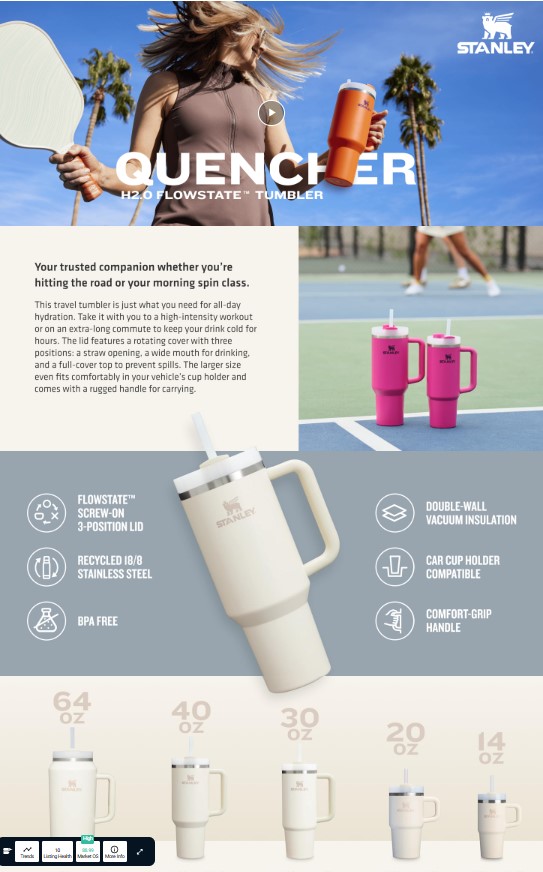
Add infographics to break down complex features of the product and answer pre-purchase questions visually. Like how to assemble a product or how to clean it.
Include at least one demo video for better understanding of usage. This not only increases Amazon conversion rate but lowers return rate. Videos can increase conversion rates by up to 80% on mobile, especially for electronics, beauty, and tools.
- Title, Bullets & Description
Let the strongest differentiator be in the title. Format bullets for easy skimming with outcome-based phrasing and objection-handling baked into the copy. How?
Focus on outcomes. For a bullet point describing a tattoo practice sheet, instead of “Made with high-grade silicone” you can write “Feels like real skin – high-grade silicone mimics the texture and resistance of human skin to improve tattoo precision.”
Instead of “Includes app integration.” within bullets, you can write “Connects in seconds, syncs instantly with Apple Health and Google Fit—no extra setup or tech knowledge needed.”
- A+ Content to grab attention
Use A+ modules to highlight:
Use-case scenarios.
Value stack comparisons.
Trust-building proof (certifications, accolades, guarantees etc.)
A+ content increases average order value by allowing upsell opportunities and cross-ASIN awareness. A+ lets you display comparison tables across your product range (e.g., different pack sizes, flavors, or premium versions). Other than communicating about your entire product range, here you get an option to upsell or even cross sell, if you correctly present it.
- Reviews
By analyzing reviews, you’ll discover real-life terms, unexpected use cases, and emotional triggers that your team might overlook. Review-inspired copy connects more naturally with buyer intent. It also boosts keyword relevance, and increases conversion rate.
Respond to negative reviews publicly to show accountability and presence.
Strong listings are the foundation of all Amazon conversion rate optimisation.
2. Price for Perceived Value
Pricing on Amazon is psychological. So, if you underprice, you lose credibility. If you overprice, you in a way fuel bounce rate.
Here’s how to fine-tune it:
- Anchor your price visually (e.g., show bundle value or premium materials)
Let’s say you sell a premium yoga mat priced at $59, while competitors are offering basic ones for $25–$30. Buyers may perceive your product as expensive unless they can visually understand why it costs more. In the product listing, mention Your mat: “6mm eco-certified TPE | Sweat-proof | Anti-tear core” so that it visually contrasts quality, anchoring your price in durability and comfort.
- Track how customers react to 2–3 price brackets and observe the Amazon PPC conversion rate response.
- Reposition your offer if competitors are cheaper and higher rated.
What is a good conversion rate on Amazon at $24.99 may not hold at $28.99, especially in categories with known anchors (think pet supplements, phone chargers, or grooming kits).
3. Design promotions methodically
Promotions shouldn’t train shoppers to wait for discounts, they should nudge already-interested buyers over the line. So, use these responsibly, or let a seasoned Amazon PPC agency such as SellerApp assist you.
You can use:
- Lightning Deals to gain velocity and boost keyword ranking.
- Prime Exclusive Discounts to lift Prime-member trust (critical in high-competition categories).
- Coupons to create scroll-stopping visibility in search results.
Make sure you monitor your Amazon advertising conversion rate before, during, and after promotions. This reveals whether you’re converting more, or just cheaper.
4. Fulfillment: The Quietest Conversion Multiplier
Let’s say two listings are identical, but one delivers in 2 days and the other in 5. Which one gets the sale?
FBA isn’t just about convenience. It signals legitimacy. It removes one more worry from the shopper’s mind.
This becomes especially critical when:
- Your category has high return anxiety (e.g., apparel, supplements).
- You’re selling at a higher price point or introducing a new brand.
- You’re noticing a gap between CTR and conversions, and everything else checks out.
If you’re running FBM, transitioning even 1–2 hero SKUs to FBA could move your conversion needle significantly.
5. Use Variations to Reduce Decision Fatigue
Grouping product variations color, size, pack count increases perceived selection without splitting traffic. You get higher review aggregation, more social proof, and better time-on-page.
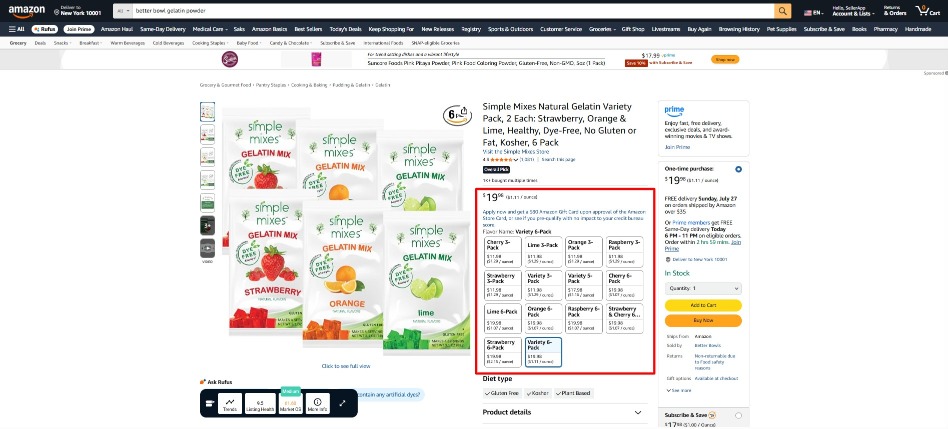
With cross-choice optimization, you can present all variations of a product in your Amazon A+ Content.
So, when a shopper lands on the A4 Single Sheet page, but sees they can upgrade to a 3-pack for better value, they do so with one click.
For ad campaigns, it supports higher Amazon PPC conversion rate because the destination listing feels like a curated experience.
Final thoughts
From listing optimization to smarter ad targeting, boosting your Amazon conversion rate takes ongoing effort, data, and a whole lot of testing.
That’s where SellerApp comes in.
We combine real-time analytics, expert-backed strategies, and AI-powered insights to help you stop guessing and start converting. SellerApp helps you optimize for every click, every session, and every product page, for results that bring stable revenue.
At the end of the day, a strong Amazon conversion rate is also about decisions. But digging through reports, tracking every click, and figuring out what’s working (or not) can quickly become overwhelming.
SellerApp’s PPC ad experts don’t just hand you numbers; they translate them into revenue-backed insights you actually care about. No more second-guessing your campaigns or wasting hours on spreadsheets. Our team helps you optimize your Amazon advertising conversion rate and listings in plain terms, so you can focus on growth, and the journey to increasing your Amazon conversion rate becomes clearer, faster, and is built for results. Schedule a call to learn more about our PPC agency service.
Additional Read:
How To Improve Amazon Sales Rank
Amazon Pay Per Click Complete Guide



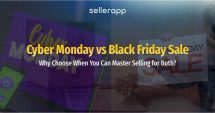
![The Ultimate Amazon Halloween 2025 Guide [Crush your Q4 Goals!] 8 amazon halloween](https://www.sellerapp.com/blog/wp-content/uploads/2025/10/amazon-halloween-215x113.jpg)

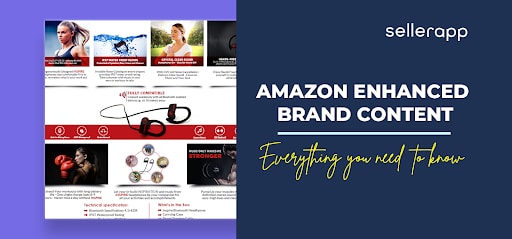

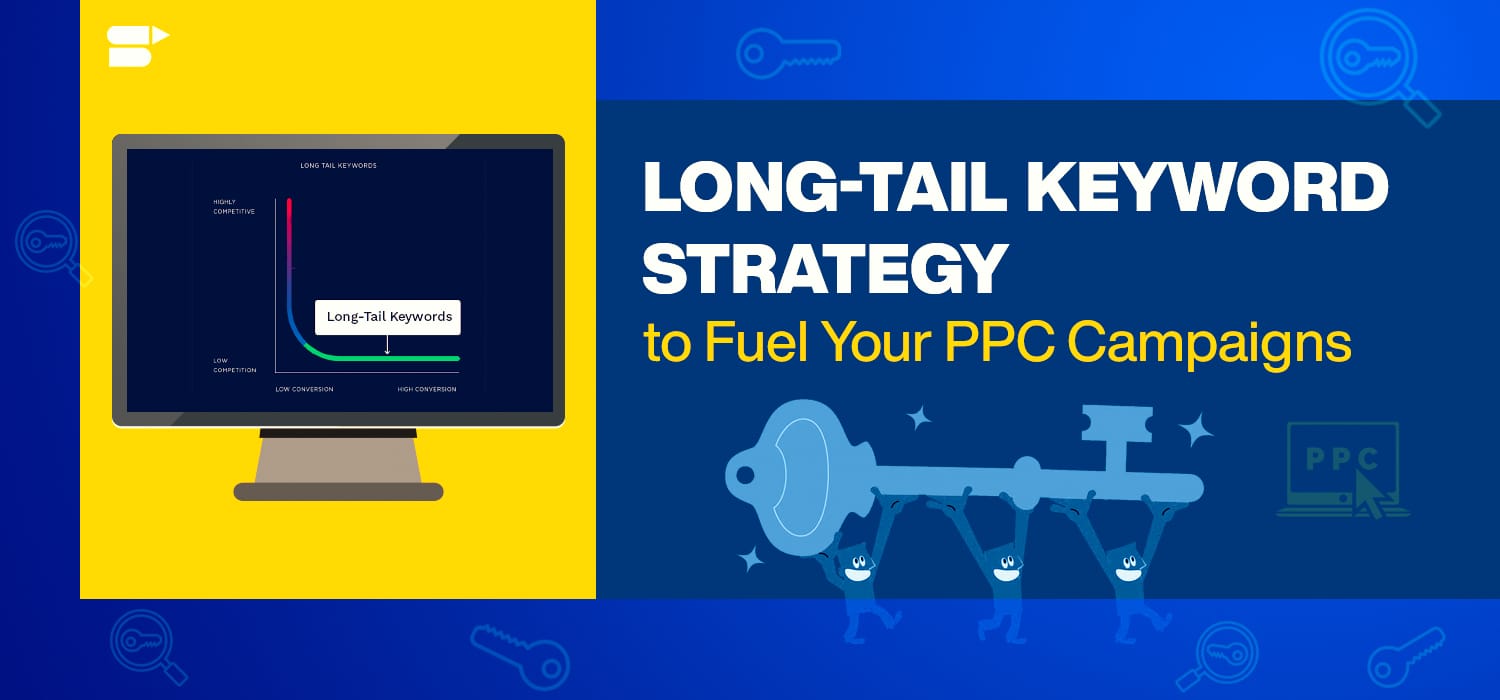
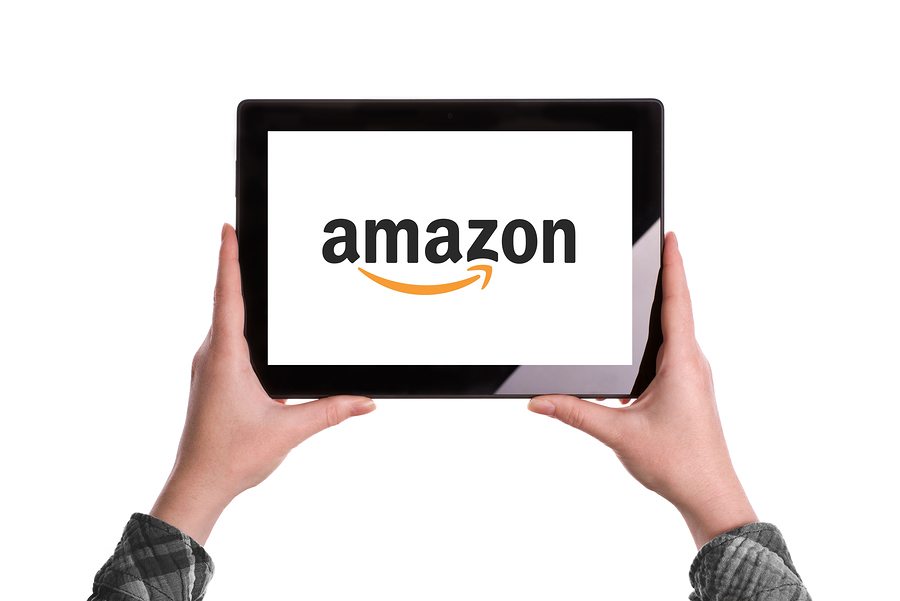

Harry Smith
August 4, 2025Fantastic guide! The 13-15% conversion rate being considered excellent gives me a solid benchmark to work towards instead of just guessing what’s good.
Rivera Campbell
August 4, 2025This cleared up so much confusion! I had no idea that videos could increase mobile conversion rates by up to 80% – definitely investing in product demos now.
Christina Hermantos
August 5, 2025Perfect timing for this guide! The point about high click-through rates with low conversions being a red flag just helped me identify exactly what’s wrong with my current listings.
Flores Greens
August 5, 2025Really appreciate this! Starting with Germany as the first European market makes total sense given its central location for logistics expansion.